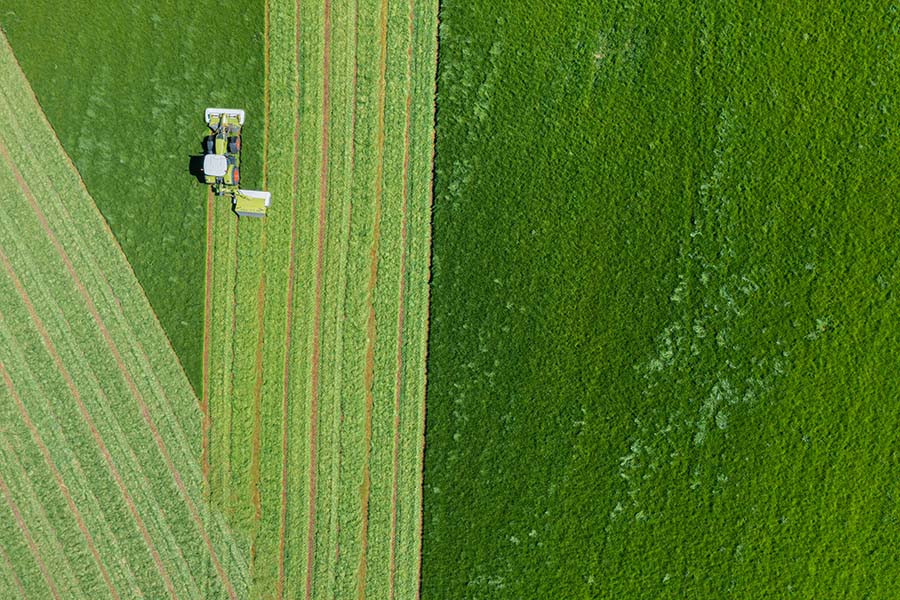Why Silage Covers Matter: The Science Behind Protecting Your Feed
To reliably produce nutritious, tasty, and long-lasting silage, you need to understand the science behind it, including the essential role of silage covers. This article examines the science of silage covers, including how they keep oxygen out, manage moisture, and regulate temperature to preserve your silage's quality and nutritional value.
Why Oxygen is the Enemy of Good Silage
Let's be blunt: oxygen is bad news for silage. When oxygen gets into your silage, harmful microorganisms can thrive, spoiling your feed, reducing its nutritional value, and ultimately risking the health of your livestock. Keeping oxygen out is essential, and silage covers are your first line of defense.
The Importance of Anaerobic Conditions
To make great silage, you need the right environment for fermentation. This means keeping oxygen out – a condition called "anaerobic." In an oxygen-free environment, the good guys (lactic acid bacteria) can thrive. These bacteria ferment the sugars in your forage, creating lactic acid and lowering the pH of the silage, which helps preserve the nutritional value of the silage and prevent decay.
How Silage Covers Keep Oxygen Out
A silage cover is simply a physical barrier that prevents oxygen from getting into your silage. When correctly applied and weighted down, it creates a tight seal around the silage, minimizes air pockets, and prevents oxygen infiltration around the edges.
The Trouble with Oxygen
Even small amounts of oxygen can cause big problems for your fodder, including decay, dry matter loss, nutrient loss, reduced feed value, unpalatable feed, and health risks for livestock.
Keeping Oxygen Out: Tips and Tricks
Here are a few simple steps to maximize oxygen exclusion and ensure high-quality silage:
- Choose a cover that's effective at keeping oxygen out, such as an advanced geomembrane or an oxygen barrier film.
- Make sure the cover is applied smoothly and tightly, without any wrinkles or gaps.
- Use enough weight to secure the cover and prevent air pockets from forming.
- Check the cover regularly for signs of damage and repair any tears or punctures immediately.
Moisture Control: Striking the Right Balance
Controlling moisture in silage is like balancing on a tightrope – it must be kept balanced even as conditions change. Too much or too little can throw things off and affect the quality of your feed. Silage covers help you maintain that "just right" moisture level by protecting your silage from drying out or getting too wet.
Why Moisture Matters in Silage Making
Think of moisture as the fuel that drives the engine of preservation. Lactic acid bacteria, the tiny microorganisms responsible for fermenting sugars in your forage and producing the all-important lactic acid, need water to thrive and carry out their metabolic processes. If the silage is too dry, these bacteria can't function effectively, and the fermentation process sputters and stalls, leading to poor preservation. Poorly preserved silage is more susceptible to deterioration and the growth of harmful molds.
On the other hand, too much moisture can also hinder fermentation by diluting the concentration of lactic acid within the silage mass. Less acidic silage creates an environment where undesirable microorganisms can flourish, making it unusable.
Moisture also functions as a transportation system within the pile. It helps nutrients move around so they're evenly distributed and available to the lactic acid bacteria. This movement ensures a consistent and efficient fermentation process throughout the silage mass.
The Dangers of Too Much or Too Little
Maintaining an optimal moisture balance is a delicate balancing act. If the mass is too dry, fermentation may be inhibited, leading to poor preservation and increased susceptibility to mold growth. Dry silage can also be difficult to compact, which increases the risk of air pockets.
Conversely, excessive moisture can dilute the concentration of lactic acid within the pile, hindering preservation and promoting the growth of undesirable microorganisms. Excess liquid can also increase effluent production, which carries away vital nutrients and poses significant environmental risks.
Silage Covers: Your Moisture Control Allies
Temperature plays a significant role when producing silage. It affects everything from how quickly the silage ferments to the overall quality of your feed. Silage covers help you keep things comfortable – literally! – by preventing both overheating and excessive cooling.
The Impact of Temperature on Silage
Temperature directly affects the tiny microorganisms that are hard at work fermenting your silage. While some heat is produced naturally during fermentation, too much heat can encourage the growth of bad bacteria and slow down the good bacteria. Temperature also influences how quickly and thoroughly the silage ferments. Higher temperatures can speed things up, which may lead to nutrient loss. In contrast, cool temperatures can extend the time for the silage to reach a stable, preserved state. This delay may increase the risk of spoilage by providing a welcoming environment for undesirable microbes like yeasts, molds, and clostridia bacteria.
Extreme temperatures at either end of the spectrum can damage the nutritional value of the feed. Excessive heat denatures proteins and breaks down vitamins, while freezing temperatures can damage plant cell walls and cause nutrient leaching.
How Silage Covers Help
By insulating the pile, silage covers keep the pile's temperature more stable. They help prevent heat from building up, especially during those hot summer months. Accordingly, many cover styles have a white outer layer that reflects sunlight to keep the silage cooler. In colder climates, some covers have a black layer on the bottom that helps absorb and retain heat from the pile to prevent the silage from freezing.
Tips for Temperature Control
- Choose a high-quality cover with the appropriate reflectivity and insulation for your climate.
- Make sure the cover is applied correctly and sealed to keep the temperature stable.
- Keep an eye on the temperature of your silage, especially during the initial fermentation phase.
- Consider factors like the surrounding temperature, sunlight exposure, and wind conditions when managing your silage.
Silage Covers: Wrapping it Up
Silage covers are priceless components for creating and storing silage. They help create the perfect environment for your silage to ferment and retain nutrients by keeping oxygen out, managing moisture, and regulating temperature. An ideal environment translates to higher-quality feed, healthier and more productive livestock, and a better bottom line for your farm.




